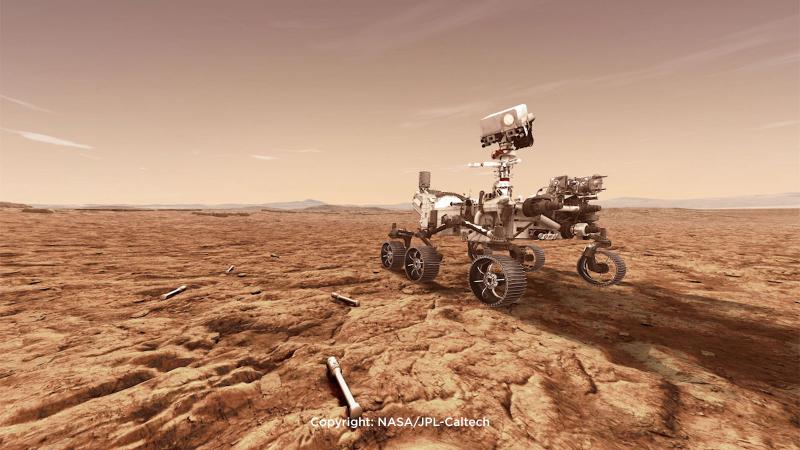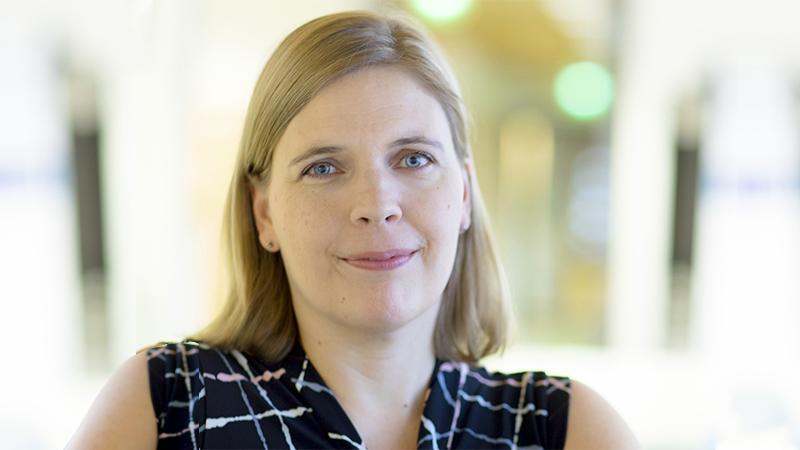Creating space-proof technology
Vaisala’s pressure and humidity sensors are soon on their way to Mars once again as part of NASA's Mars Exploration Program, in collaboration with Finnish Meteorological Institute (FMI). These space-proof sensors come from the Vaisala cleanroom where all our sensors are developed and manufactured. The demanding conditions in space set high standards for technology, requiring the most reliable sensors that can be trusted to endure without maintenance or repair.
The Mars 2020 rover, named Perseverance, is equipped with Vaisala’s pressure and humidity sensors. The sensors are part of the instrumentation designed by the Finnish Meteorological Institute (FMI), and they will be used to gather accurate pressure and humidity data from the atmosphere of the Red Planet.
These devices are advanced versions of the ones Vaisala and FMI delivered to the Curiosity Rover in 2012. The Curiosity Rover found traces of water on Mars.
If it works on Mars, it works anywhere
The conditions on Mars, and in space overall, are extremely demanding. The measurement instrument, including the sensors, must withstand extreme heat and cold as well as the turbulence of the space travel. After arriving on Mars, the equipment must work reliably for years without any maintenance and provide the data accurately.
One could say that if the technology works on Mars it works anywhere.
It’s a great honor that our technology has been chosen for this program, as only the best technology will be picked on board. We are especially happy knowing the amount of effort and determination this project has required of everyone on board.
Vaisala’s humidity and pressure sensors are known for their long-term stability and accuracy and they are robust enough to operate in the harshest of the environments. Both sensors have been developed specifically for demanding environmental and industrial conditions.
At Vaisala, we develop and manufacture our sensors in our own laboratory. Our own in-house cleanroom facility and sensor factory are core capabilities for Vaisala’s success. In addition, over 22% of Vaisala employees work in research and development, and we have dozens of researchers in technology development.
The researchers work in the same campus where our cleanroom and manufacturing are located, which enables continuous research, testing and development as well as fast prototyping. With continuous development, we can make our sensors even more robust and durable for a variety of conditions and environments.
Decades of development behind the sensors
The humidity sensors on board the Perseverance rover are based on Vaisala’s HUMICAP® technology, introduced already in 1973. HUMICAP® is the world’s first thin-film capacitive humidity sensor. Since then, Vaisala has become the market leader in relative humidity measurements, and thin-film capacitive humidity sensors have become a global industry standard. Vaisala humidity sensors are used widely in meteorology, for example in radiosondes, as well as in a variety of demanding industrial applications.
The pressure sensors on board the rover are based on BAROCAP® technology, also Vaisala’s proprietary technology, and introduced for the first time in 1985. BAROCAP® is a silicon-based micromechanical pressure sensor that offers reliable performance in a wide variety of applications, from meteorology to industrial measurements.
Both sensors have been developed continuously over the years and will be developed also in the future. The features have been developed especially for the demanding conditions, for example to withstand extreme temperatures, dust and chemicals.
Top measurement performance requires long-term commitment and investments in research and development. Just as space exploration, it is a field for those with patience, curiosity, and perseverance.




Add new comment